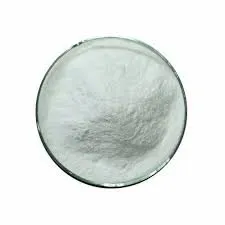
Dec . 15, 2024 10:23 Back to list
hydroxypropyl methyl cellulose uses
The Versatile Applications of Hydroxypropyl Methyl Cellulose
Hydroxypropyl Methyl Cellulose (HPMC) is a cellulose ether that has gained significant attention across various industries due to its unique properties and versatility. With its ability to form gels, retain water, and act as a thickening agent, HPMC plays a crucial role in pharmaceuticals, food, construction, and personal care products. This article delves into the numerous uses of HPMC and its impact on various fields.
1. Pharmaceutical Applications
In the pharmaceutical industry, HPMC is widely used as a binder, film former, and controlled-release agent in tablet formulations. Its non-toxic and biocompatible characteristics make it an ideal choice for drug delivery systems. HPMC is often utilized to enhance the solubility and bioavailability of drugs, ensuring that medication is released at a controlled rate. This property is particularly valuable in the formulation of sustained-release tablets, which allow for the gradual release of active ingredients over an extended period. Additionally, HPMC is used in ophthalmic solutions due to its ability to maintain moisture and enhance the viscosity of eye drops.
2. Food Industry
Hydroxypropyl Methyl Cellulose has found numerous applications in the food industry because of its gelling and thickening properties. It is often used as a food additive to improve texture and stability in various products, including sauces, dressings, and dairy items. HPMC acts as a fat replacer in low-fat products, providing the creamy texture that consumers expect. Furthermore, it serves as an emulsifier in baked goods, ensuring a consistent mixture of ingredients and improving the overall mouthfeel of the final product. Given the rising demand for gluten-free options, HPMC is also being utilized as a binding agent in gluten-free baked goods, enhancing their quality and structure.
3. Construction Industry
hydroxypropyl methyl cellulose uses

In construction, HPMC is an essential component in the formulation of cement, mortar, and tile adhesives. Its water retention properties help improve workability and extend the open time of these materials. This results in better adhesion and reduced shrinkage, ultimately leading to more durable structures. HPMC also enhances the viscosity of construction materials, ensuring that they can be easily applied without sagging or dripping. This is especially beneficial in vertical applications, such as wall tiles. Moreover, the use of HPMC in construction contributes to improved sustainability, as it can reduce the amount of water required for the mixing process.
4. Personal Care Products
HPMC is extensively used in cosmetic and personal care formulations. Its thickening and emulsifying properties make it an ideal ingredient in lotions, creams, and gels. By improving texture and stability, HPMC helps create luxurious products that appeal to consumers. Moreover, it serves as a film-forming agent in hair gels and styling products, providing hold and manageability without leaving a sticky residue. Additionally, HPMC is utilized in the formulation of cleansing products, enhancing the product’s ability to cleanse the skin effectively without causing irritation.
5. Environmental Applications
With the increasing focus on sustainability and eco-friendly products, HPMC is seeing growing interest in environmental applications. Its biodegradable nature makes it an attractive option for packaging materials and other applications that require a minimal ecological footprint. Researchers are exploring the potential of HPMC-based materials in biodegradable films and coatings, adding to the versatility of this compound while promoting environmentally responsible practices.
Conclusion
Hydroxypropyl Methyl Cellulose is a remarkable compound that spans across various industries, from pharmaceuticals and food to construction and personal care. Its multifunctional properties make it an invaluable ingredient that enhances product performance, texture, and stability. As industries strive for innovation and sustainability, the uses of HPMC are likely to expand, paving the way for new applications that will continue to benefit both consumers and manufacturers alike. Whether enhancing the health benefits of pharmaceuticals, improving food texture, or promoting eco-friendly practices, HPMC remains a versatile and essential component in modern applications.
-
Versatile Hpmc Uses in Different Industries
NewsJun.19,2025
-
Redispersible Powder's Role in Enhancing Durability of Construction Products
NewsJun.19,2025
-
Hydroxyethyl Cellulose Applications Driving Green Industrial Processes
NewsJun.19,2025
-
Exploring Different Redispersible Polymer Powder
NewsJun.19,2025
-
Choosing the Right Mortar Bonding Agent
NewsJun.19,2025
-
Applications and Significance of China Hpmc in Modern Industries
NewsJun.19,2025







